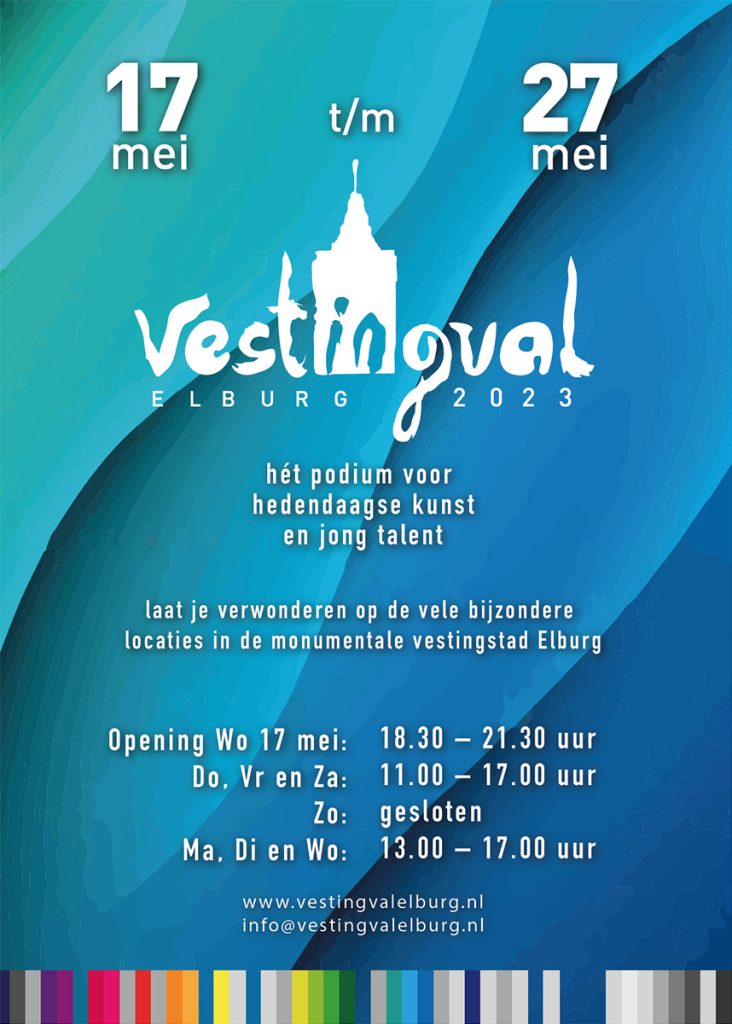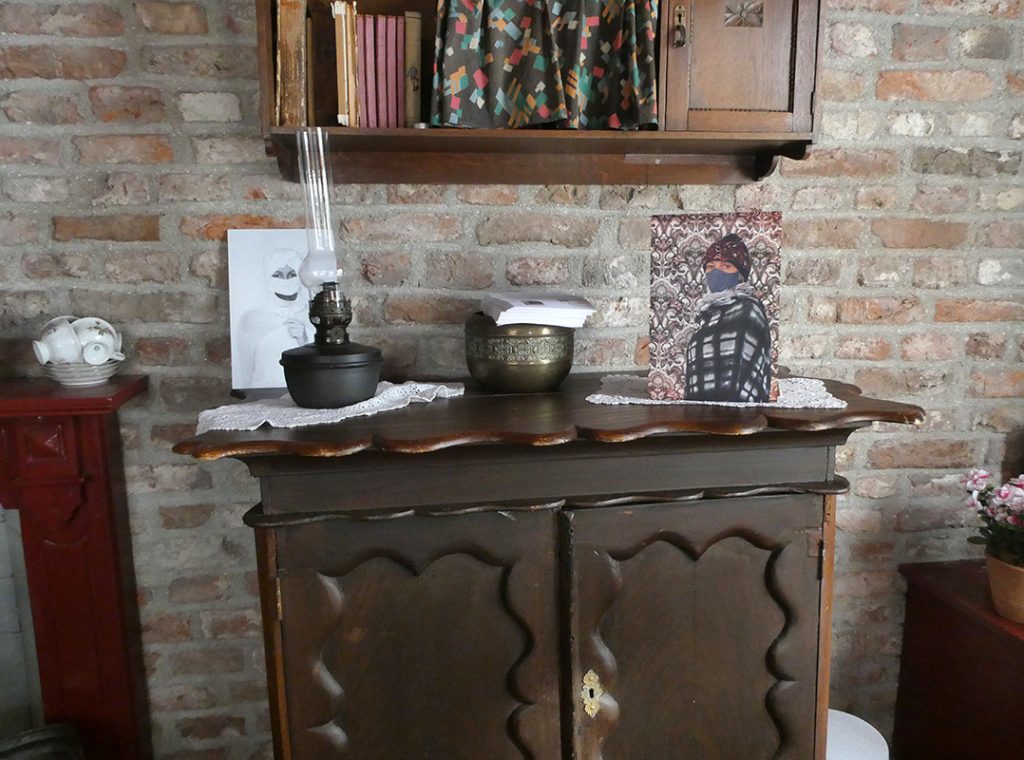
Vestingval Elburg is een kunstevenement dat jaarlijks plaats heeft van Hemelvaart tot Pinksteren. Tijdens het Vestingval worden verschillende disciplines belicht. Op zo’n dertig plaatsen wordt kunst tentoongesteld en zijn muziekoptredens, dichtkunst en lezingen te beluisteren.
” Marieke Noort maakt kunstwerken die natuur en cultuur combineren, geïnspireerd door o.a. schimmels, paddenstoelen, korstmossen en verlaten oorden. Ze gebruikt grafische technieken zoals materiaalprint en recycleert zoveel mogelijk materialen om duurzaam werk te maken. Deze bestaan vooral uit tekeningen, monoprints en collages van restmaterialen.
Noort werkt ook aan een ander project, geïnspireerd door wereldwijde klederdrachten en culturen, waarbij ze fotoportretten maakt van volken die hadden kunnen bestaan. Haar serie over identiteit en cultuur uit 2002 werd opgepakt tijdens de lockdown in 2020 en vormen nieuwe relaties met huisraad in Muurhuisje 1*. “
- Muurhuisjes, zonder wc en kraan, werden bewoond door de armen van de stad, soms met grote gezinnen.
De muren deden allang geen dienst meer en konden op deze manier gebruikt worden om optrekjes stevigheid te bieden.

Vestingval Elburg is an art event that takes place annually from Ascension to Pentecost. Various disciplines are highlighted during the Vestingval. Art is exhibited in about thirty places and you can listen to music performances, poetry and lectures.
” Marieke Noort makes works of art that combine nature and culture, inspired by, among other things, fungi, mushrooms, lichens and abandoned places. She uses graphic techniques such as material printing and recycles as many materials as possible to create sustainable work. These mainly consist of drawings, monoprints and collages of residual materials.
Noort is also working on another project, inspired by global costumes and cultures, in which she makes photographic portraits of peoples that could have existed. Her 2002 series on identity and culture was picked up during the 2020 lockdown and forms new relationships with household goods in Wall House 1*. “
- Wall houses, without toilet and tap, were inhabited by the poor of the city, sometimes with large families.
The walls had long since ceased to serve and could be used in this way to provide sturdiness to dwellings.